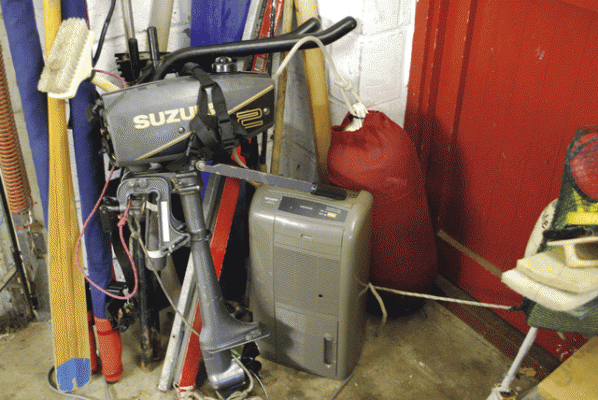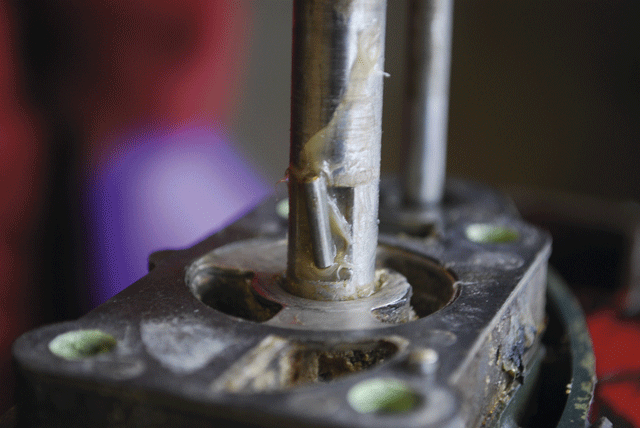After a long winter indoors many 2-stroke outboards are reluctant to start. A simple service should make yours more reliable. Here Steve Dawkins of Bursledon Outboards shows PBO’s Ben Meakins how it’s done
Rules within the EU mean you can no longer buy a new, small 2-stroke outboard motor in Europe, but their light weight, compact size and longevity means tens of thousands of used examples are still to be found on boats from Caithness to Crete.
The start of the season is when any unreliability issues are most likely to rear their ugly head, and there’s a good reason for that.
‘Most people assume they can just take their outboard off their boat and put it straight into their shed for the winter,’ technician Steve Dawkins told me in his workshop at the Cabin Boatyard on the Hamble River. ‘Then, come the spring, they’re surprised when it doesn’t work.’
I kept quiet. My outboard had been sitting forlornly in the garage among a pile of ropes, fenders and sails since it came ashore at the end of last summer.
 Watch the video
Watch the video
Do it yourself!
This step-by-step guide takes you through a service of a small 2-stroke outboard. The pictures show Mariner 3.3hp and Suzuki 2hp outboards, and while other makes of engine are subtly different, the main components should be recognisable.
Anyone with a reasonable level of technical ability should be able to breeze through the service, but if you’re in any doubt, take yours along to a dealer. If you are going to do it yourself – and this mostly applies to late-model motors – check first that what you’re doing won’t invalidate any warranties.
1: Drain the old fuel
‘The most common complaint we get is from people saying it worked fine last year but now it won’t start,’ said Steve. This is because petrol evaporates over time, leaving behind an oily, paraffin-type residue which gums up the carburettor. So the first step is to drain the old fuel.

1: Remove the fuel pipe from the carburettor by loosening the clip with a pair of long-nosed pliers.

3: If necessary, remove the tank and clean out any residue or gunge. There is often a small filter just above the fuel tap.
2. Check the spark plug

Remove the spark plug with a socket. The electrode of a healthy plug should be a brown or grey colour. If not, clean out any carbon deposits and check the sparking gap matches the recommendation of the engine manufacturer. If the ceramic insulator is damaged or the electrode burnt away, you’ll need a new plug.
3. Check the recoil starter

The recoil starter is held on with three bolts. Remove these and turn the starter over. Check for fraying in the cord and give the spring and bearings a squirt of lubricant.
4. Remove, strip and clean the carburettor
Located on the front of the engine, the carburettor is responsible for ensuring the correct blend of 2-stroke fuel mix with air. A clogged-up carburettor means the engine will run rough and won’t idle properly. The solution is to remove, strip down and clean the carburettor.

1. Undo the clamp and ease the carburettor off its mounting. Make sure you don’t lose the O-ring seal.
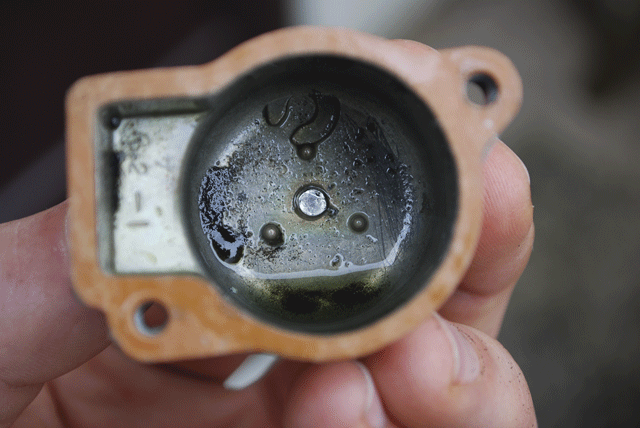
3: Sit the bowl in a container of carburettor cleaner, clean any corrosion or residue with a small wire brush, then leave it to soak for a few hours.

4: Next, remove the float. The float height is important, so at this point it’s a good idea to take a photograph of the valve so you can put it back together exactly as you found it.
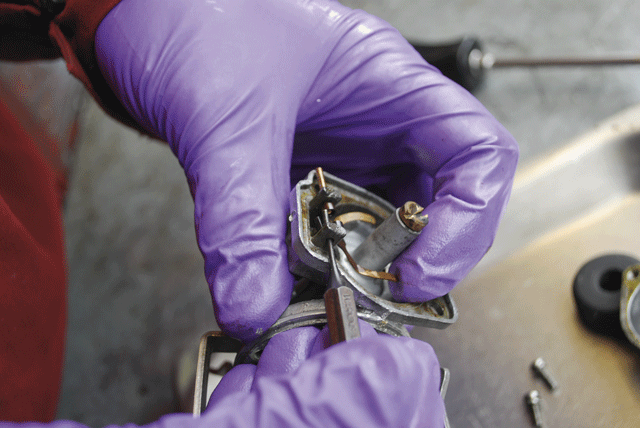
5: Push out the needle valve hinge pin and remove the float arm. On some engines the needle valve will be linked to the float – so you may have to remove the pin before the float.

6: Next, remove the main jet. Unscrew it, check the hole is clear (inset), and soak it in carburettor cleaner to make sure. ‘Nine out of 10 problems we see are down to the main jet being blocked,’ says Steve.

8: Reattach it to the engine. Make sure the O-ring is correctly installed, or you’ll have major problems later.
The lower leg
1. Remove the gearbox to check the water pump
On engines with more than one gear, the pump is located on top of the gearbox unit, so if your engine has gears you’ll first need to undo the gear linkage. On smaller engines the pump impeller can be found behind the propeller (see below).27

1: Remove the round blank, usually found just above the gearbox. Move the gear lever so you can see the linkage nut and undo it with a spanner.
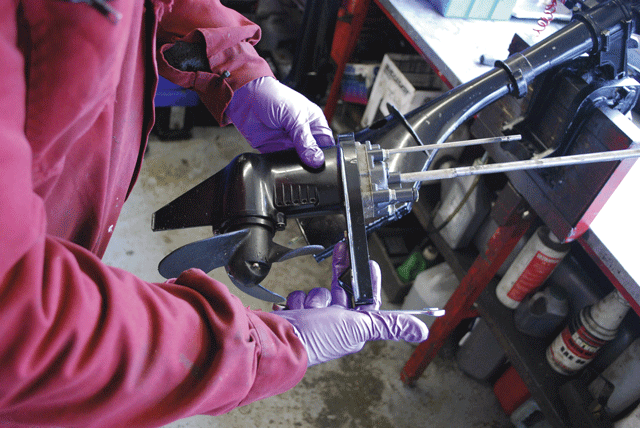
2: Now remove the gearbox by undoing the bolts holding on the gearbox and carefully sliding it out of the lower leg.

3: Remove the pump housing by undoing bolts and sliding it up the propshaft. Make sure you don’t lose the keyway (see 6).

7: Reattach the pump housing and impeller. As you slide it down the last bit, turn the shaft to bed the impeller in correctly.
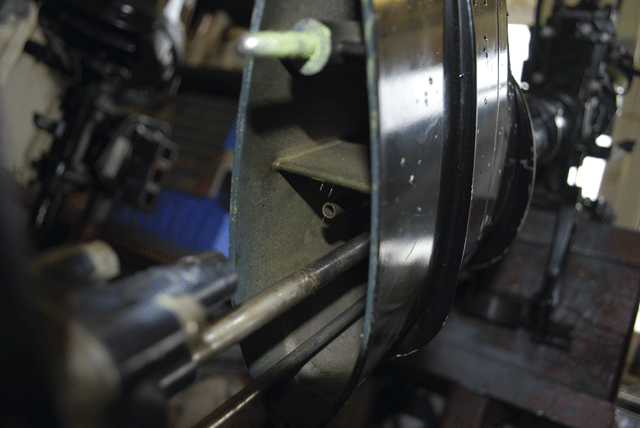
8: Now reattach the gearbox to the lower leg. Carefully slide in the gearbox, making sure the water pickup pipe (small spigot just above the gearbox linkage in this photo) is unblocked and lined up correctly inside its socket.
On smaller engines with only one gear…
Remove the propeller and then the plate behind it. The water pump impeller can be found behind this plate.
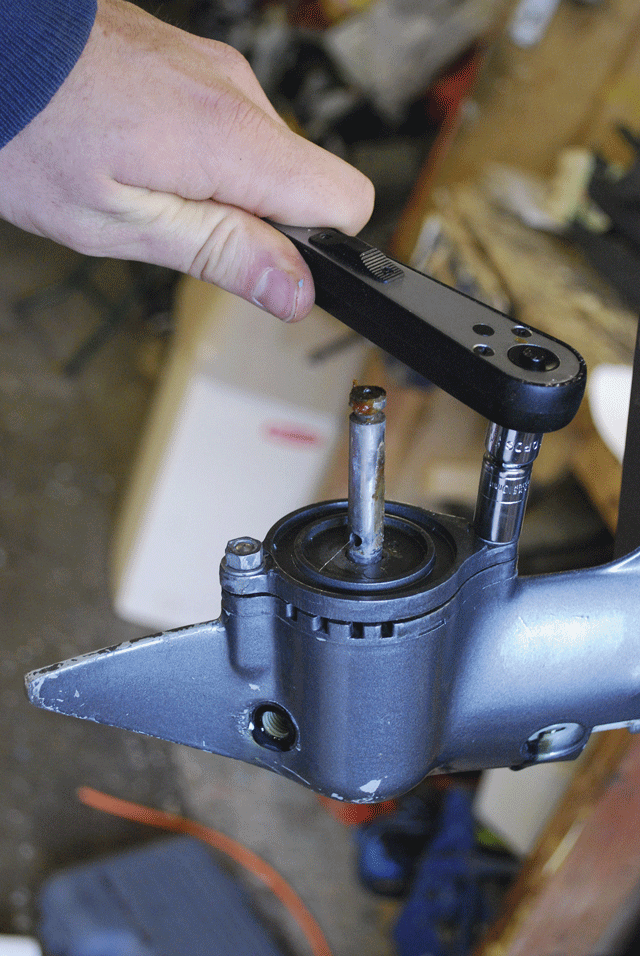
 2. Check and replace the gearbox oil
2. Check and replace the gearbox oil
The professionals perform a pressure test to check the seals are still doing their job. Without the right equipment you’ll struggle to do this, so you’ll have to make do with a visual inspection. One way to see if you have a major problem is to leave the engine standing on a piece of clean cardboard overnight and check for telltale leaks in the morning.
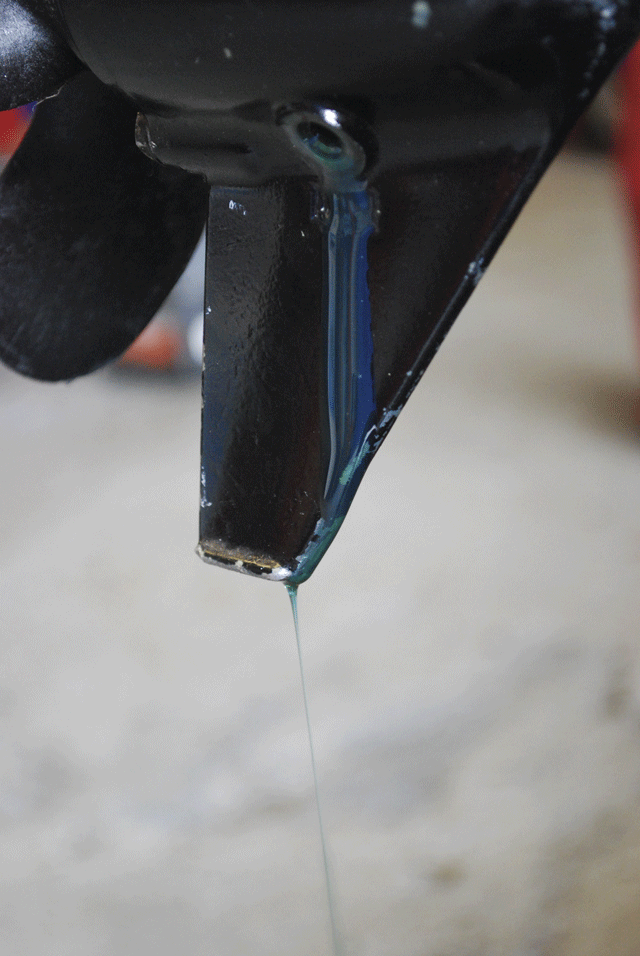
Check the oil for water ingress. If the oil is blue or clear, it should be fine, but if it’s cloudy or settled you may have a problem. You can use an oil testing kit to make sure. If there is a leak, take it to a dealer for new seals.

Refill the gearbox with new oil from the bottom up – most gear oil comes in a squeezy tube or a pump-action oilcan. It’s full when oil starts to come out of the top hole.
3. The Anode

The anode is usually found on or under the cavitation plate. It’s important that you replace an anode before it gets to the stage of the one in this photo. Make sure you replace it with the correct type for salt/fresh water.

4. Remove the propeller and check the shearpin – remove, grease it and replace it. Remove any fishing line that has wound itself round the propshaft, grease the shaft and reattach the propeller.

Now run the outboard in a tank of fresh water with the cover off to check it all works, before finally greasing anything that moves, especially the clamp screws and throttle.
Prevention is better than cure!
Here are Steve’s top tips to keep your engine running smoothly.
1 Salt water is an engine’s worst enemy – so the engine should be flushed through with fresh water after every use, or it will start to corrode from the inside out.
2 Take the cover off and give everything a good squirt of WD40 now and then.
3 Before you put the engine away, turn off the fuel tap with the engine running and let it starve itself of fuel: this will empty the fuel lines and carburettor and prevent oily deposits in the carb.
4 Check you have spare shearpins. Tape some to the inside of the engine cover so you’ll know where to find them when you need them.




